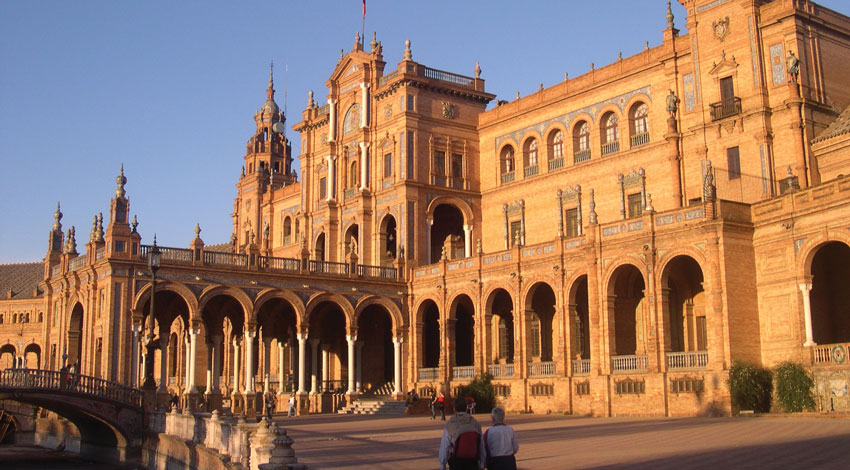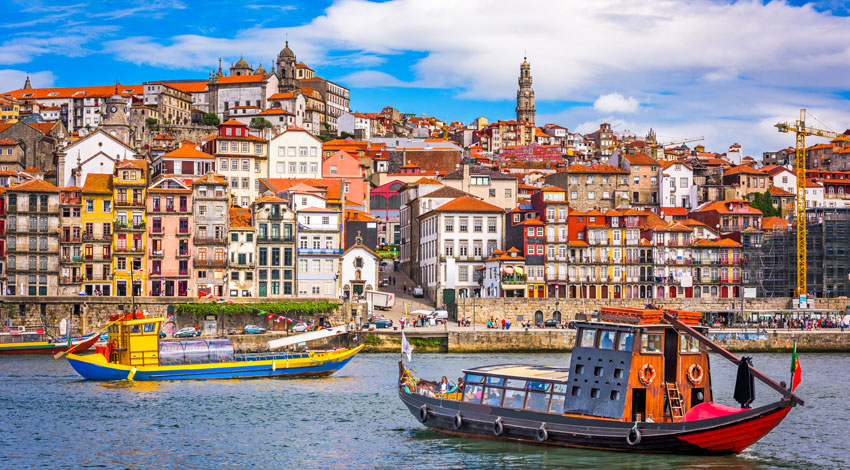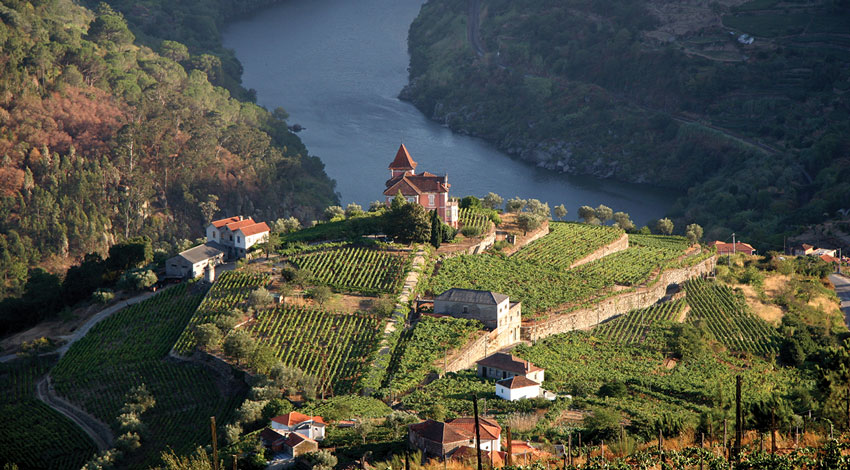Exploring Iberian Gems: Spain vs. Portugal
When it comes to Southern European travel, two of the top destinations are Spain and Portugal, which are located on the Iberian peninsula. Like many adventurers, you might be wondering how is Portugal different from Spain? While both countries share a border, there are a few stark differences between Spain vs. Portugal. Each has its own official language, with residents of Portugal speaking Portuguese and residents of Spain speaking Spanish. They are both Romance languages but have unique linguistic characteristics.

Plaza de Espana, Seville
Another difference lies in Portugal vs. Spain travel. Each country has its own distinct culture with separate traditions, customs and ways of life. For example, Portugal has a strong maritime and exploratory history that has shaped its cuisine, music and culture. Although these countries are vastly different, they share similarities, such as the Moorish occupation and the Age of Discoveries.
There’s much to learn when understanding the connection between Spain vs. Portugal. In this guide, we will cover some of the top attractions and experiences in each country, as well as the best time to travel to Spain and Portugal so you can plan your next European adventure.

Porto, Portugal
Diverse Attractions and Experiences in Spain vs Portugal
As you look into Portugal vs. Spain travel, there are diverse attractions and experiences you should consider to determine which destination is right for you. To start, the geography of each country varies, with Portugal offering stunning coastal areas and wine regions like the Douro Valley. Spain offers more varied landscapes due to its size, such as the Pyrenees Mountains, the sunny beaches of Costa del Sol and beyond. Here are some of the diverse attractions and experiences you can embark on in each country:
- Barcelona and Gaudi’s Masterpieces: When traveling to Spain, one of the most unique attractions you can witness firsthand are some of Antoni Gaudi’s famous works, such as the Sagrada Familia and Park Güell, which blend Late Gothic and Art Nouveau styles.
- Lisbon’s Alfama District: On many Portuguese tours, you can visit the capital city’s famous Alfama District, which consists of historic neighborhoods known for their narrow streets, Fado music and the São Jorge Castle, which offers sweeping views of the city.
- Flamenco performances in Seville: In Seville, you can experience the vibrant Spanish culture by watching traditional Flamenco performances, a form of song, dance and instrumentation.
- Porto and the Douro Valley: One of the most beautiful places in Portugal during the winter is Porto and the Douro Valley. This city in northwest Portugal rests along the Douro River and is known for its stunning architecture and rich history. As you explore the Douro Valley, you can visit port wine cellars to learn about the wine-making process and indulge in tastings.
- Madrid’s museums: Spain’s bustling city of Madrid is home to some of the world’s most famous museums, housing historic works of art that everyone should see. Visit the Prado Museum to see Las Meninas by Velázquez, Picasso’s Guernica in the Reina Sofia Museum or the art collections in the Thyssen-Bornemisza Museum.
- Portugal’s Pena Palace: Discover the Pena Palace in Sintra, a Romanticist Castle on the Portuguese Riviera nestled on the top of a grassy hill in the Sintra Mountains. This UNESCO World Heritage Site resembles a fairy tale, with its lush greenery and panoramic views.
- Costa del Sol: The beautiful beaches of Costa del Sol in Spain offer stunning views of the Mediterranean, allowing visitors to embrace the relaxing lifestyle that attracts the rich and famous. Known as the birthplace of Picasso, Costa del Sol offers many adventures in beachside towns like Marbella and Malaga, such as golf, boating and nightlife.
- Algarve’s beaches: When it comes to Portugal vs. Spain travel, the beaches are pretty comparable. While Spain is known for Costa del Sol, Portugal is known for the Algarve, an area renowned for its coastline and beautiful beaches. The coastline is dotted with sea caves and grottoes, where visitors can take boat tours to get a closer view of these unique cliffside formations.
As you research Spain vs. Portugal, both countries offer a lot of unique adventures and experiences for visitors to enjoy. Fortunately, both are located on the Iberian peninsula, allowing you to explore both destinations in one trip. At Road Scholar, we have a great selection of Iberian tours that will immerse you in the culture and geography of these two southern European hot spots.

Douro Valley, Portugal
Best Time to Travel to Spain and Portugal
Now that you know the top activities and experiences you can enjoy in these two locations, you may wonder when the best time to travel to Spain and Portugal is. Fortunately, Spain and Portugal are great destinations for year-round travel, and when you go depends on your personal preferences.
The best time to travel to Spain and Portugal for those looking for a warm and sunny vacation is June to August. The summer months bring tourists from around the world to Spain and Portugal, primarily to their beachside locations, where they can soak up the sun and enjoy the crystal blue waters. Summer also brings a lively atmosphere to many of the top cities in these countries, including Barcelona, Madrid and Lisbon.
However, the best time to travel to Spain and Portugal for those looking to escape crowds and hot weather, are the cooler months of spring, winter and fall. During these seasons, Spain and Portugal have moderate temperatures that aren’t too cold where you need several bulky layers or too warm where you’re looking for a cool area for relief.
At Road Scholar, we make choosing between Spain vs. Portugal easy with a vast collection of experiential travel programs that can bring you to both countries. See where you will end up next by booking your next travel program today.
